


True life accounts and heartfelt testimonies from people who have had near-death experiences which have changed their lives forever.

The purpose of this website is to explore one of the most intruiging aspects of being human: the near-death experience
(NDE). It invites you to reconsider what happens when we die, and in doing so, challenges you to ponder that perhaps we are much more than our earth-bound physical bodies.
One in 10 people have near-death experiences, according to
a new study. These near-death experiences are equally as common in people who are not in imminent danger of death as in those who have experienced truly life-threatening situations such as heart attacks, car crashes, near drowning or combat situations.
“There is currently more scientific evidence to the reality of near-death experience than there is for how to effectively treat certain forms of cancer,” states radiation oncologist Dr. Jeffrey Long in his groundbreaking book Evidence of the Afterlife. Although there are an estimated 8000 NDEs each year in the U.S. alone, still there are those who don't believe they are any more than the result of a dying brain. The last section of this website titled EVIDENCE BORNE OF EXPERIENCE provides very compelling, and we believe irrefutable evidence that this is not the case.
In the mid-1970’s, Dr. Raymond Moody interviewed hundreds of men and
women who had gone through “clinical death” and been revived. Dr. Moody published a report
on his findings which later became a best-selling book. Raymond Moody is the man who popularized the term Near-Death Experiences. Dr. Moody found striking
similarity among the accounts. In fact, there were
fifteen
recurring points of likeness. So, if we
were to construct a composite experience based on the common elements of one-hundred
individual death experiences, it might sound like this:
“A man is dying and, as he reaches the point of greatest physical distress, he hears himself
pronounced dead by his doctor. He begins to hear an uncomfortable noise, a loud ringing or
buzzing, and at the same time feels himself moving very rapidly through a long dark tunnel.
After this, he suddenly finds himself OUTSIDE OF HIS OWN PHYSICAL BODY, but still in
the immediate physical environment, and he sees his own body from a distance, as though he is a
spectator. He watches the resuscitation attempt from this unusual vantage point and is in a state
of emotional upheaval.
After a while, he collects himself and becomes more accustomed to his odd condition. He
notices that he still has a body; but one with a different nature and different powers from the
physical body he’s left behind. Others come to meet and to help him – the ‘spirits’ of relatives
and friends who have already died.
A loving, warm spirit –
A BEING OF LIGHT
– appears
before him. The being asks a question, nonverbally, to make him evaluate his life. The being
helps him along by showing him a panoramic, instantaneous playback of the major events of his
life. At some point, he approaches a barrier which, apparently, represents the threshold
between earthly life and the next life. But, he finds that he must go back to the earthly life
because the time for his death has not yet come.
He resists because, by now, he is taken up with his experiences in the afterlife and does not
want to return. He is overwhelmed by intense feelings of joy, love...and peace. Still,
he reunites
with his physical body and lives.
Later...he tries to tell others, but he has trouble doing so for
two reasons: First, there are no human words adequate to describe the unearthly episode. And,
second, he finds that people don’t believe him. So, he stops telling other people, even though the
experience affects his life profoundly, especially his views about death and its relationship to
life.
”
In his groundbreaking book Life After Life Raymond Moody investigated case studies of people who experienced clinical death and were subsequently revived. This classic exploration of life after death started a revolution in popular attitudes about the afterlife and established Dr. Moody as the world's leading authority in the field of near-death experiences.
The extraordinary stories presented in the next video provide some evidence that there is life after physical death, as Moody recounts the testimonies of those who have been to the other side and back -- all bearing striking similarities of an overwhelming positive nature. These moving and inspiring accounts give us a glimpse of the peace and unconditional love that await us all.

The purpose of this website is not necessarily to prove to you beyond doubt that there is life after death, in fact that may not even be possible at the moment, depending on how deeply ingrained your present beliefs are. What it can do though is give you good reason to believe in the possibility that bodily death is not the end, and provide some scientific evidence that supports this view. But, even then, you may be left with what you consider to be reasonable doubt, and so you are encouraged to lay aside your doubts for a while and ponder over what you hear, see and read here. Absolute proof is not really possible right this moment; but it is always possible to suspend disbelief long enough to reconsider the matter and decide which viewpoint is the more reasonable to hold in light of the evidence presented here.
Near-death experiences are often profoundly meaningful, yet when they are reported, they are frequently met with skepticism and dismissal by medical caregivers and family members. But do we have to fully understand these events to honor the transformative role they often play in the lives of those who experience them? Do we need to prove they are something more than the result of illness, medication or a dying brain to acknowledge their power to impact lives in a positive way?
Our main aim here is to present a wide variety of information regarding NDEs in the most religiously unbiased way possible and leave it to you to make up your own mind what you will believe. So whether you identify as a Hindu, Jew, Christian, Muslim, Agnostic, Atheist, or whetever your personal beliefs may be, we hope you will find the video testimonies and information presented here to be both inspirational and informative.

Below you can view many video testimonies by people from all walks of life who have had their views on life and death and God completely transformed through a NDE. Quite a number were atheists or agnostics prior to their life-changing experience, but are now in no doubt at all that God exists and that there is a grande purpose to life, and that they are fulfilling their individual purpose right now, and that an unbelievably wonderful life awaits them once they have fulfilled their purpose here and it is time for them to transition to their next life experience.
Below that you will discover what the experts have to say regarding NDEs and the importance of them.






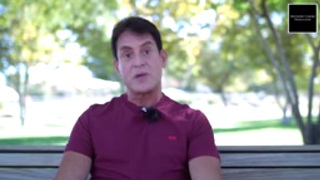

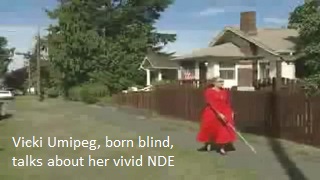



























(more NDE testimonies below)

Recollections in relation to death, so-called out-of-body experiences (OBEs) or near-death experiences (NDEs), are an often spoken about phenomenon which have frequently been considered hallucinatory or illusory in nature; however, objective studies on these experiences are limited.
In 2008, a large-scale study involving 2060 patients from 15 hospitals in the United Kingdom, United States and Austria was launched. The AWARE (AWAreness during REsuscitation) study examined the broad range of mental experiences in relation to death. Researchers also tested the validity of conscious experiences using objective markers for the first time in a large study to determine whether claims of awareness compatible with out-of-body experiences correspond with real or hallucinatory events.
Results of the study have been published in the journal Resuscitation and are available online .
The themes relating to the experience of death appear far broader than what has been understood so far, or what has been described as so called near-death experiences.
In some cases of cardiac arrest, memories of visual awareness compatible with so called out-of-body experiences may correspond with actual events.
Among those who reported a perception of awareness and completed further interviews, more than half experienced a broad range of mental recollections in relation to death, the majority of which were fearful and persecutory experiences. Around 9 percent had experiences compatible with NDEs and 2 percent exhibited full awareness compatible with OBE’s with explicit recall of ‘seeing’ and ‘hearing’ events.
A higher proportion of people may have vivid death experiences, but do not recall them due to the effects of brain injury or sedative drugs on memory circuits.
The recalled experience surrounding death merits a genuine investigation without prejudice.
The results of this extensive study would seem to suggest that these experiences are subjective in nature and very much connected with the individual's own fears, sense of guilt or religious beliefs, or a combination of all of these. Muslims, for example, are likely to experience Muhammed whereas Christians Jesus, and Roman Catholics Mary, and so on. This does not make the experiences any less real, on the contrary, the NDEs of many are more real and vivid to them than any waking experience in this life. Most of us walk this earth blind until death. Some are lucky enough to open their eyes before death, and it is our hope that this website will act as an eye-opener to many.
The University of Virginia’s Division of Perceptual Studies research portfolio includes investigating children who have memories of past lives; the nature of consciousness and the mind-body relationship; neuro-imaging studies of psi events; and individuals who report experiencing near-death experiences. In this panel, the legendary actor, writer and comedian John Cleese, convenes DOPS research faculty to present an overview of the research to which they have dedicated their academic careers.
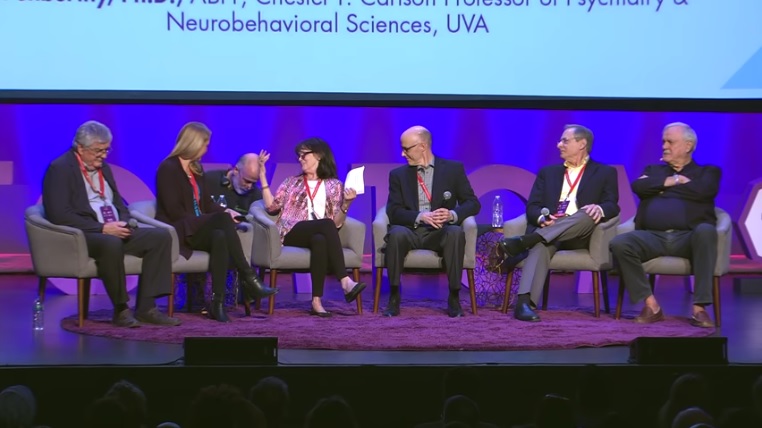
In our never-ending quest to understand what happens to us after we die, humans have long seen the rare phenomenon of near-death experiences as providing some hints. People who’ve had a brush with death often report seeing and experiencing life-altering events on “the other side,” like a bright white light at the end of a long tunnel, or being reunited with lost relatives or beloved pets. But despite the seemingly supernatural nature of these experiences, [so called] experts say that science can explain why they happen – and what’s really going on.
A near-death experience is a profound psychological event with mystical elements. It typically occurs in people close to death, or during situations of intense physical or emotional pain, but may also happen after heart attacks or traumatic brain injuries, or even during meditation and syncope (loss of consciousness due to a fall in blood pressure). They’re surprisingly common, with a third of people who have come close to death reporting having experienced one.
Common characteristics people report are feelings of contentment, psychic detachment from the body (such as out-of-body experiences), rapid movement through a long dark tunnel, and entering a bright light.
Culture and age may also influence the kind of near-death experience people have. For example, many Indians report meeting the Hindu king of the dead, Yamraj, while Americans often claim to have met Jesus. Children typically describe encountering friends and teachers “in the light”.
Most reported near-death experiences are positive, and have even helped in reducing death anxiety, affirming life, and increasing well-being. However, some near-death experiences are negative and include feelings such as lack of control, awareness of nonexistence, hellish imagery, or perceived judgement from a higher being.
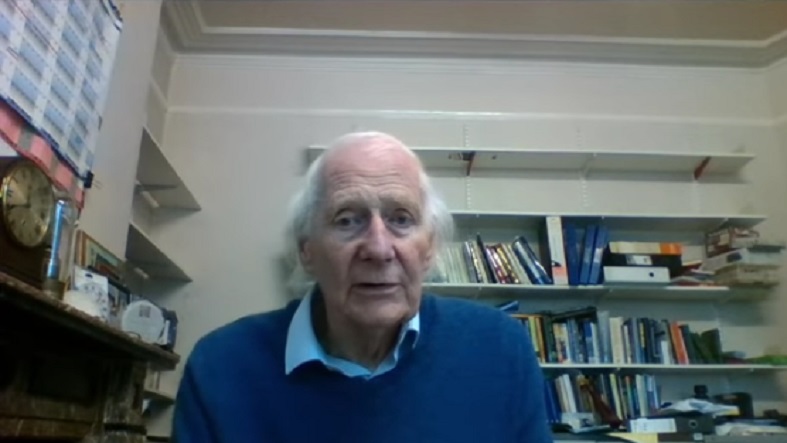
Neuroscientists Olaf Blanke and Sebastian Dieguez have proposed two types of near-death experiences. Type one, which is associated with the brain’s left hemisphere, features an altered sense of time and impressions of flying. Type two, involving the right hemisphere, is characterised by seeing or communicating with spirits, and hearing voices, sounds and music. While it’s unclear why there are different types of near-death experiences, the different interactions between brain regions produce these distinct experiences.
The temporal lobes also play an important role in near-death experiences. This area of the brain is involved with processing sensory information and memory, so abnormal activity in these lobes can produce strange sensations and perceptions.
Despite several theories used to explain near-death experiences, getting to the bottom of what causes them is difficult. Religious people believe near-death experiences provide evidence for life after death – in particular, the separation of the spirit from the body. Whereas scientific explanations for near-death experiences include depersonalisation, which is a sense of being detached from your body. Scientific author Carl Sagan even suggested that the stress of death produces a remembrance of birth, suggesting the “tunnel” people see is a reimagining of the birth canal.
But due to the fanciful nature of these theories, other explanations have emerged. Some researchers claim that endorphins released during stressful events may produce something like near-death experience, particularly by reducing pain and increasing pleasant sensations. Similarly, anaesthetics such as ketamine can simulate near-death experience characteristics, such as out-of-body experiences.
Other theories suggest near-death experiences arise from dimethyltryptamine (DMT), a psychedelic drug that occurs naturally in some plants. Rick Strassman, a professor of psychiatry, observed in a study from 1990 to 1995 that people had near-death and mystical experiences following injection of DMT. According to Strassman, the body has natural DMT released at birth and death. However, there is no conclusive evidence to support this view. Overall, chemical-based theories lack precision and can’t explain the full range of near-death experience features people experience.

Endorphins, natural DMT, lack of brain oxygen, and brain malfunctions are all explanations for the phenomenon.
Researchers have also explained near-death experiences via cerebral anoxia, a lack of oxygen to the brain. One researcher found air pilots who experienced unconsciousness during rapid acceleration described near-death experience-like features, such as tunnel vision. Lack of oxygen may also trigger temporal lobe seizures which causes hallucinations. These may be similar to a near-death experience.
But the most widespread explanation for near-death experiences is the dying brain hypothesis. This theory proposes that near-death experiences are hallucinations caused by activity in the brain as cells begin to die. As these occur during times of crisis, this would explain the stories survivors recount. The problem with this theory, though plausible, is that it fails to explain the full range of features that may occur during near-death experiences, such as why people have out-of-body experiences.
Currently, there is no definitive explanation for why near-death experiences happen. But ongoing research still strives to understand this enigmatic phenomenon. Whether paranormal or not, near-death experiences are extremely important. They provide meaning, hope, and purpose for many people, while offering an appreciation of the human desire to survive beyond death.
This article by applied cognitive psychologist Neil Dagnall and parapsychologist Ken Drinkwater is republished from The Conversation under a Creative Commons license. Read the original article.
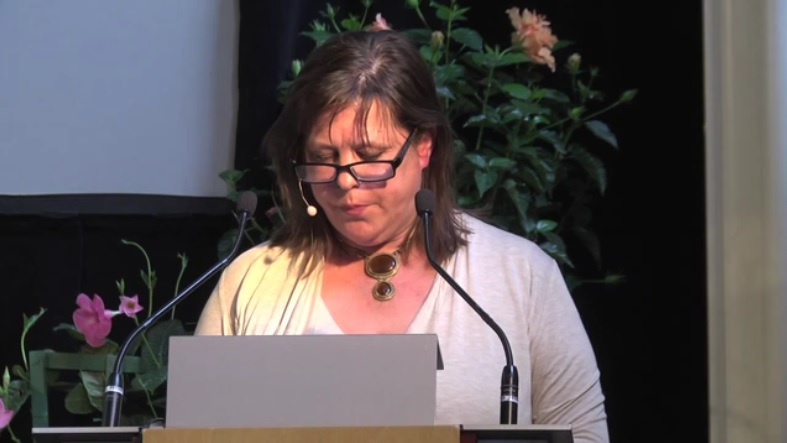
One in 10 people have had a hallucination-triggering ‘near death experience’, a recent study suggests.
‘Twenty years later I can still remember how I felt’ says woman who felt total peace when she almost drowned as a child
Respondents reported having their souls sucked from their body, encountering loved ones and great peace – though some found their experiences terrifying
Seeing your life flash before your eyes, experiencing time slow down or having the feeling of drifting out your body may be more common than first thought, as a study suggests one in 10 people has had a near death experience (NDE).
Danish researchers studying the body’s response to imminent mortal danger, real or otherwise, said these experiences are triggered by the same mechanism that causes lucid “wakeful” dreaming.
Respondents reportedly variously meeting past family members, feeling their soul “sucked out” or being paralysed by a demon sat on their chest – a phenomenon which has since become a recurring dream in one of the participants.
Previous research in patients whose hearts stopped has suggested between 5 percent and 8 percent of people experience an NDE.
But the Danish study used questionnaire responses from 1,034 participants, across 35 countries, and found nearly 300 people reported some kind of psychological or spiritual experience.
The majority – 73 percent – said the experience was unpleasant, but of the 106 people who met the criteria for a “true” NDE, as defined by the Greyson NDE scale, 53 percent said it was pleasant and just 14 said it was unpleasant.
This group included people who nearly drowned, people who were physically assaulted and women during childbirth.
One respondent who nearly drowned as an eight-year-old child explained how she was overcome by a sense of “total peace”.
“Twenty years later I can still remember how I felt,” she told the researchers. “It was an amazing feeling.”
The most common experience was feeling time slowing down or distorting, which was reported by 87 percent of people, followed by exceptionally fast thoughts (65 percent) and vivid senses (63 percent).
Around half had an out of body experience, and one woman said that childbirth was the trigger for her NDE. “I felt like I just died, and I went to heaven,” the anonymous 36-year old said. “I heard voices, and I was sure I would not come back to my life. It was weird. I could not control my body.”
One US man who was dragged out to sea as a child saw his life flash before his eyes and recalls seeing dead family members and a bright light before falling back through a tunnel to his body.
The phenomenon is thought to be linked to the overlap of sleep and waking states. During sleep cycles the brain enters a state known as rapid eye movement (REM) where the brain is active as during wakefulness and dreaming is more vivid.
This state can intrude into people’s waking moments, and lead to memorable dreams, and even feelings of paralysis. These waking dreams were experienced by about half of the NDE group, compared to a 16 percent of those who didn’t have an NDE.
The findings have not yet been published in a peer reviewed journal but were presented at the European Academy of Neurology congress.
“We confirmed the association of near-death experiences with rapid-eye movement sleep intrusion,” said study’s lead researcher Dr Daniel Kondziella, a neurologist at the University of Copenhagen.
“Identifying the physiological mechanisms behind REM sleep intrusion into wakefulness might advance our understanding of near-death experiences,” he added.
There is inherent irony in the conceptual relationship between Near-Death Experience (NDE) and the mystical: death is not normally the means by which an individual seeks mystical insights even if, in analogical language, death is a metaphor representing transformation.
There is immediate tension in the suggestion that dying is a possible condition for certain types of mystical knowledge, or a necessary circumstance for life-changing perceptions. The major proviso for such knowledge is that the individual not die but return to life animated with a new vision of what-is.
This tension between near-death and a return to altered life is rarely mediated by choice—who would choose physical death as a means for mystical knowledge? And yet, the literature clearly illustrates that dying persons have NDEs that are highly transformative, even transcendent, so in a very basic sense, death is not prohibitive of mystical knowledge.

By death, I am referring to the clinical descriptors of death: no heartbeat, no respiration, no eye-reflex, no measureable brain activity. However, dying is a process, a dynamic series of biological stages and degrees of subtle loss and increasing paralysis, which may, under optimal circumstances, be halted and result in revival and resuscitation.
It is this in-between phase of neither fully alive nor fully dead that provides an opening to alternate landscapes whose transphysical contours suggest a much more vast and complex realm of human perceptions than currently recognized by normative physicalist accounts of embodied awareness.
(from Lee Irwin's book: Mystical Knowledge and Near-Death Experience.)
In the following Spirited Debate video from Fox News Dr. Jeffrey Long discusses his book 'God and the Afterlife' which is based on the largest scientific study of near-death experiences in history involving four thousand people from all walks of life and explains near-death experiences and how they are signs of not only an afterlife but also a supreme being.
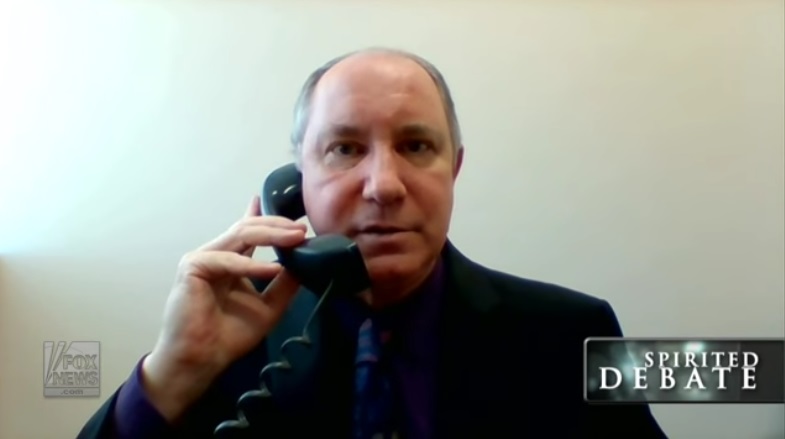








































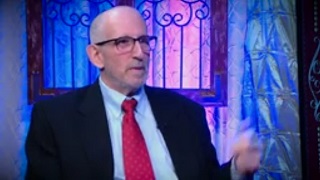







Below is a rational analysis of the near-death experience phenomena by Peter Fenwick (born 25 May 1935), a neuropsychiatrist and neurophysiologist who is known for his pioneering studies of end-of-life phenomena
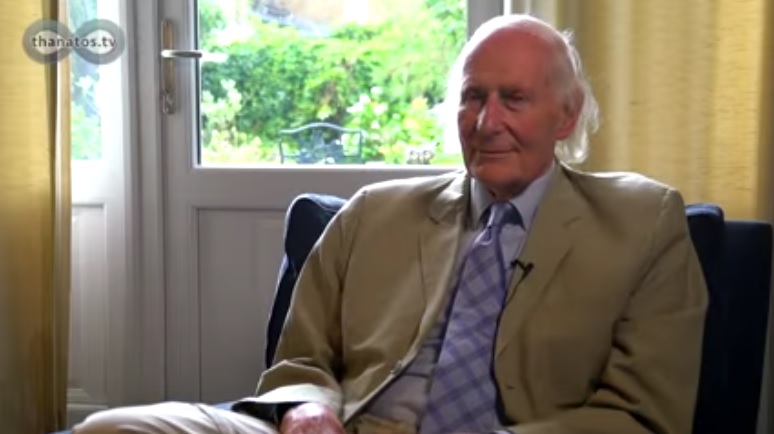
The medical scientific community was thrown into turmoil a few years ago when a doctor's assistant reaffirmed the claims made by Dr. Lloyd Rudy some years earlier regarding NDEs and the possibility of an afterlife.
NEAR-DEATH EXPERIENCE
The video below is of an interview with renowned heart surgeon, the late Dr. Lloyd Rudy. In the footage, he recounts his experience during a surgery where a patient apparently passed away. The patient somehow revived at some point. In fact, the patient had encountered a near-death experience and recounted all the details of the operating theatre which he had seen when he had an out-of-body experience during his NDE. It would be good to note that these details were recounted during the period where the patient was under general anaesthetic, had his eyes taped shut, and was supposed to be medically dead.
VERIFICATION OF CLAIMS
Dr Lloyd Rudy passed away not long after the video interview, and his assistant during the surgery has come out to verify the claims. In January 2013, Dr Amado-Cattaneo, surgical assistant to Dr Lloyd, commented on the video interview on Youtube, saying, "Everything that Dr Lloyd Rudy explained in this video is absolutely true. I was there with him doing this surgery. The patient fully recovered and what he said to us after the surgery is what he experienced".
RESEARCH FINDINGS ON THE CASE
NDE researchers Titus Rivas and Rudolf Smit had come to know of the event and contacted Dr Amado to find out more about the case. The discussion regarding the case was published in the Journal of Near-Death Studies, the only peer-reviewed scholarly journal (ISSN 0891-4494) devoted exclusively to the field of near-death studies.
Here are some excerpts of the discussion and information on the case itself in point form:
1) The event had occurred somewhere around the late 1990s and early 2000s.
2) Dr Amado had witnessed the entire surgery and everything that Dr Rudy had claimed in the video.
3) Dr Amado has till date not had a rational scientific explanation for what happened during the surgery, even though it occurred as it did.
4) The patient technically died for 20 minutes, with no vital life signs. But after being revived, the patient could describe the events as was told in the video.
5) The patient made a full recovery post surgery.
6) The doctors were in shock as they had pronounced the man dead and even informed the patient's wife about his death.
7) Patients' eyes are always shut or possibly even taped up during surgery, as the opening of the eyes during surgery can damage the cornea.
8) According to the doctors, the descriptions given by the patient were very accurate, both visual and audio experiences of what happened in the room during the patient's NDE.
9) Dr Amado states again that this is in no way a hoax, and it was "as real as it gets."
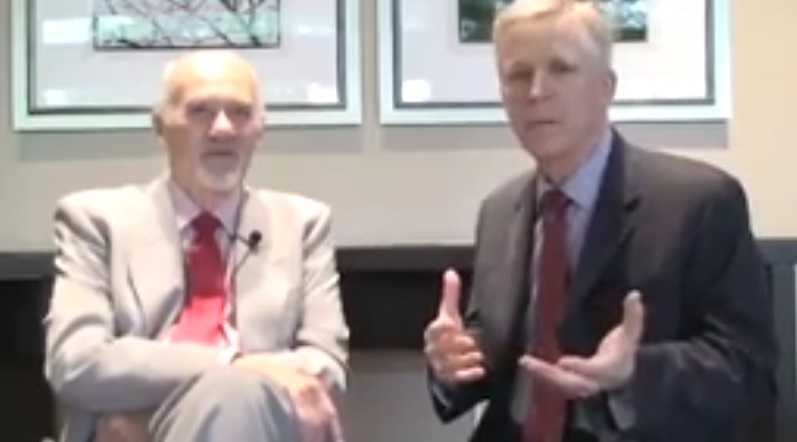
In our next video Dr. Laurin Bellg, editor of Journal of Near-Death Studies discusses her NDE research.
“It is impossible to be so close to the cutting edge of life and death and not be transformed by it in some way. Our beliefs and opinions about life and death are shaped by what we encounter.” So writes Laurin Bellg, M.D., in her book, Near-Death in the ICU.
Dr. Bellg, a board-certified critical care physician and Chair of Medicine and ICU director for two intensive care units in the Appleton, Wisconsin area, draws upon some 20 years experience in attending to critically ill and dying patients.
“Although it was within the hallowed halls of my conventional medical training that I first encountered patient accounts of the unusual and mysterious during near-death moments, extreme illness and trauma, it has only been within the past few years that I have begun to pay serious attention not only to the medical care of my patients but also to their personal experiences as they approach death,” she offers in the book’s Introduction, adding that her own thoughts about life and death have morphed over the years, due in part to the accounts of transcendent experiences.

On the show The Atheist Experience, streamed on YouTube every sunday, Mr. Dillahunty can often be heard saying in his own dogmatic way that there is no evidence at all for God or an afterlife. When questioned by his listeners as to what he would consider to be evidence for the existence of God and the afterlife he says he doesn't know, but goes on to say that if God really exists then he should know and should be able to provide the evidence, therefore God either does not care whether we believe he exists or not, or he does not exist. Perhaps God has already done that but Mr. Dillahunty is either blind to it or willfully refusing to acknowledge that such evidence exists. Either way it is not God's problem now, it is Mr. Dillahunty's!
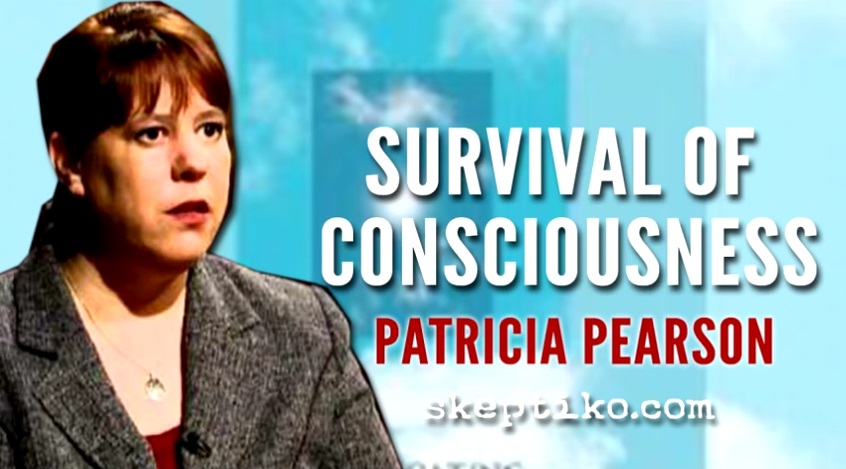
How secular people have lost their way and continue in their willful ignorance when it is so very obvious to those who have studied consciousness and the NDE phenomena what is really going on may be difficult to understand. Perhaps confirmation-bias plays a large part in this, and they only extensively research and study subjects that confirm what they already believe to be true and more or less disregard and brush aside everything else to do with consciousness regarding it as "woo".
Also, we cannot lose sight of the fact that prominent atheists like Richard Dawkins, Daniel Dennett, Lawrence Krauss, Matt Dillahunty, etc., make their living out of being Godless heathens as some refer to themselves as being, and therefore are very unlikely to be actively searching for scientific evidence that actually supports the view of the existence of an afterlife as it is not in their interest to do so, for obvious reasons. They have convinced themselves that there is no afterlife or underlying purpose to life and that's that.
Thousands of people have had near-death experiences, but scientists have argued that they are impossible. Dr. Eben Alexander was one of those scientists. A highly trained neurosurgeon, Alexander knew that NDEs feel real, but are simply fantasies produced by brains under extreme stress. Then, Dr. Alexander's own brain was attacked by a rare illness. The part of the brain that controls thought and emotion—and in essence makes us human—shut down completely. For seven days he lay in a coma. Then, as his doctors considered stopping treatment, Alexander's eyes popped open. He had come back.
Alexander's recovery is a medical miracle. But the real miracle of his story lies elsewhere. While his body lay in coma, Alexander journeyed beyond this world and encountered an angelic being who guided him into the deepest realms of super-physical existence. There he met, and spoke with, the Divine source of the universe itself.
Alexander's story is not a fantasy. Before he underwent his journey, he could not reconcile his knowledge of neuroscience with any belief in heaven, God, or the soul. Today Alexander is a doctor who believes that true health can be achieved only when we realize that God and the soul are real and that death is not the end of personal existence but only a transition.
This story would be remarkable no matter who it happened to. That it happened to Dr. Alexander makes it revolutionary. No scientist or person of faith will be able to ignore it.
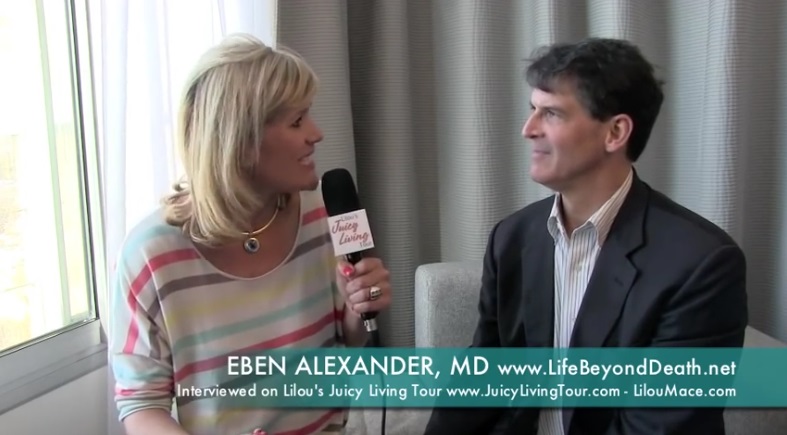
"Extraordinary claims require extraordinary evidence" was a phrase popularized by scientific author Carl Sagan, and is one that rational thinkers and skeptics have adopted. We believe that the information and video testimonies on this website provide extraordinary evidence for the extraordinary claim that an individual's conscious awareness continues beyond the veil of physical death, adding confirmation to what the American father of psychology, William James taught in his book "The Varieties of Religious Experience". He concluded his book by saying regarding the varieties of religious experience, including the near-death experience, that "The only thing that it unequivocally testifies to is that we can experience union with something larger than ourselves and in that union find our greatest peace." [p 525].
Major study shows mind still works after the body shows no signs of life. Scientists say people are aware they’re dead because their consciousness continues to work after the body has stopped showing signs of life.
That means that, theoretically, someone may even hear their own death being announced by medics.
The claim was made by Dr Sam Parnia, director of critical care and resuscitation research at NYU Langone School of Medicine in New York City.
He and his team are looking at people who suffered cardiac arrest, technically died, but were later revived. It’s the largest study of its type ever carried out.
Some of those studied say they had awareness of full conversations and seeing things that were going on around them, even after they were pronounced dead.
These accounts were then verified by the medical and nursing staff who were present at the time.
Death is defined as the point at which the heart no longer beats, and blood flow to the brain is cut off.
Dr Sam Parnia said: “Technically, that's how you get the time of death – it's all based on the moment when the heart stops.
“Once that happens, blood no longer circulates to the brain, which means brain function halts almost instantaneously.
“You lose all your brain stem reflexes – your gag reflex, your pupil reflex, all that is gone.”
However, there’s evidence to suggest that there’s a burst of brain energy as someone dies.
In 2013 researchers at the University of Michigan looked at the electrical signals inside the brains of nine anaesthetised rats having an induced heart attack.
They saw activity patterns which are linked to a “hyper-alerted state” in the brief period after clinical death.
Dr Parnia said: "In the same way that a group of researchers might be studying the qualitative nature of the human experience of 'love', for instance, we're trying to understand the exact features that people experience when they go through death, because we understand that this is going to reflect the universal experience we're all going to have when we die."
In the following video Dr. Sam Parnia joins CBSN to discuss the findings of this cutting edge scientific study.
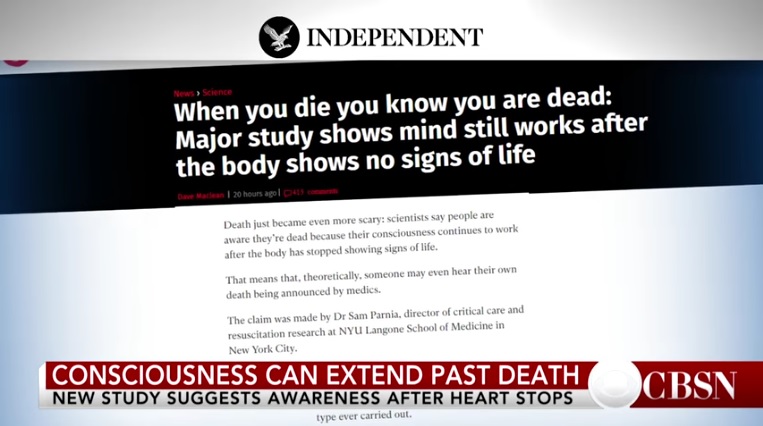
William James taught that consciousness is outside the brain and that the brain filters it, as many people have done since then, and as the results of the extensive study Dr. Parnia speaks about in the above video reveal, whereas the main thrust of modern science is to ignore that and to teach that it is all brain function and nothing more, which is a very limited perspective that explains very little. Brain cells, for example, are not replaced when they die, yet there have been many examples where brain-damaged patients have had function restored in a different, unused and undamaged part of the brain indicating that the brain is the physical instrument used by the mind rather than the mind being a function of the brain, which is what modern science often leads people to believe.
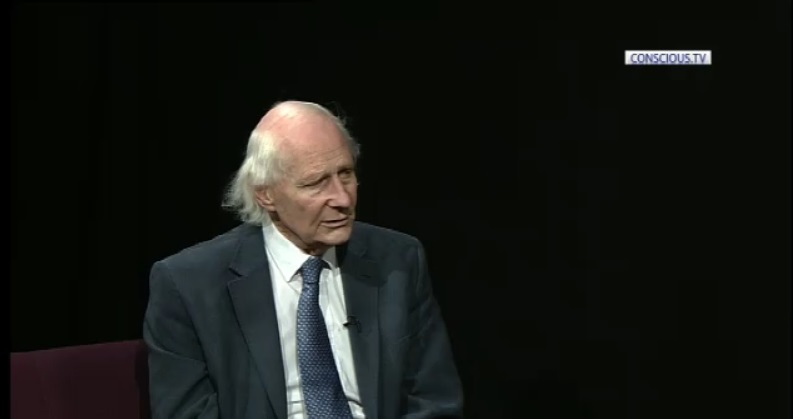
How long the secular scientific community can continue to ignore and dismiss the NDE phenomena remains to be seen. One thing is for certain, we will all meet death eventually, and whether it is a beautiful, serene and enlightening transition or an ugly, fearful one will largely depend on the type of life we have led here, coupled with our beliefs regarding life and death, and in particular our religious beliefs and convictions (if any). Feelings of guilt and regret will make the transition much more difficult and painful to bear.
American author and lecturer Earl Nightingale had a saying: "We become what we think about", meaning that the thoughts that occupy our minds most of the time shape our character and future circumstances, and this is no doubt true on all planes of existence. Therefore, if we wish to experience heaven in the afterlife we must literally take heaven with us by adopting a heavenly disposition here and now. By practising random acts of kindness towards others and refraining from judging others too harshly or unkindly we can work towards this.
In other words “Don’t judge someone until you’ve walked a mile in their shoes.” as the old saying goes. And as Eric Shaw of Shaw Digital Media Publications rightly says: its purpose is to remind us that we can’t know what it’s like to live in someone else’s reality. You never know exactly what someone else may be going through or has had to go through in the past since we often keep our private life and experiences hidden especially when things aren’t going well. Many of us are very judgmental about others even when all we have to judge someone on is what we see of their behavior, what they may tell us or their silence and often what others tell us about them. What we see may not be all there is.
Eric goes on to point out: You may see a person where they are right now but we don't know where God is taking them or what He is taking them through. There was a time when if it wasn't for the blessings of God or for someone who reached out to help us, we would be in a totally different position in life.
The saying points out that no matter what you believe you have come to “know” about a person; if you haven’t heard their story directly from them you can’t begin to know what they may be struggling with, perhaps problems we’ve never even guessed at. The quote is phrased the way it is to make it easy to remember. Thinking about walking in someone else’s shoes is a direct reminder not to assume you have any idea where they are coming from or where they maybe going unless you have gone through what they have and experienced it in the same way.
Taking it slightly deeper, the saying is referencing the idea that essentially since we can’t become somebody else in their entirety, we can’t see through their eyes and don’t perceive things the same way. So even when the person tries to explain the situation to us, we often don’t quite get it even if we make the proper empathetic comments. Each of us sees things differently and reacts differently to the world in which we live. And because of that even if we’ve had the same experience as another person, we would have evaluated it, processed it and reacted to it differently.
Part of the reason we do this, according to social psychologists is due to the types of attributions we make for others and our own behavior. What the social psychologist have shown is that when we are observing others we focus on their disposition, or personality ignoring any situational determinants. When we look at our own behavior we blame any problems on the situation not a dispositional tendency. When we don’t like someone or aren’t comfortable with them we tend to blame them for how they act. This also means we assume that since it’s dispositional that’s just who they are and it’s not going to change. We assume the opposite of ourselves. We assume things are situational, so whatever problem we may be experiencing we say there’s something in the environment that caused it and as such the situation can always change.
So even when you think you’ve gone through the same situation as another person be careful not to assume you experienced it in the same way as the other individual. The best thing you can do is try to relate your own experience to what they are going through but to listen with an open mind and accept your views and their views will differ at least somewhat. Try to understand where they are coming from with your internal critic and judge not for the time being. Let them talk and accept whatever they say at face value. Just like we don’t like it when others judge us when we feel they know nothing about our situation, others don’t like it when the tables are turned.
God's grace covers us all. Be a positive force in life. This life is a schoolroom. Sadly many treat it like a playground instead. Eventually you will have to give up everything you possess, even your physical body, and what will be left are the events of this life which your subconscious mind records incessantly from cradle to grave.
It is becoming more generally understood that our thoughts determine our experiences. One who entertains good thoughts and makes his or her actions conform to them usually finds that harmony and well-being are evident in their life. One who harbors wrong thoughts often learns that they beget unpleasant consequences. The wise person sees the need to watch their thoughts and accept only those that are good and constructive.
Happily it is not necessary for us to die in order to realize the truth about life and consciousness. We are here to practice the art of living afterall. "The Realization System" is one excellent tool available to aid us in this, and has helped thousands towards a better understanding of consciousness and in particular the workings of our subconscious mind. It is essentially a course in practical psychology. You can download the free "Realization" ebook and some audio segments from The Realization System by pressing the banner below.
Thanks for visiting our site. We sincerely hope that you have found the testimonies and information presented here to be inspirational and informative. If so please share this site with your friends, associates and loved ones by pressing any of the buttons below.
Website design by Raymond E. Smith, publisher of The Realization System
